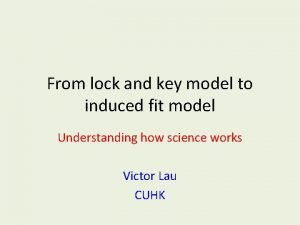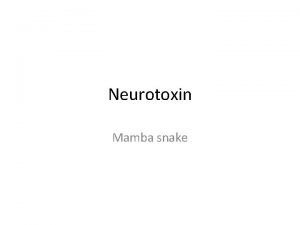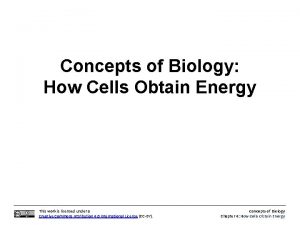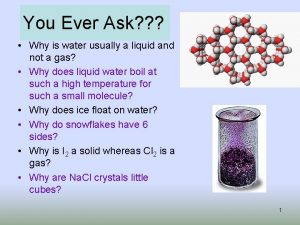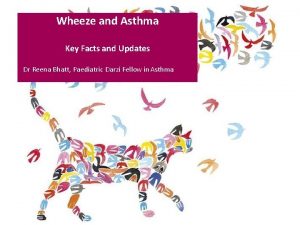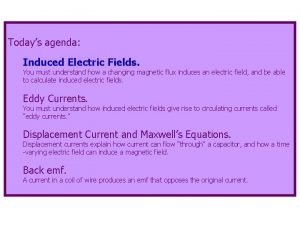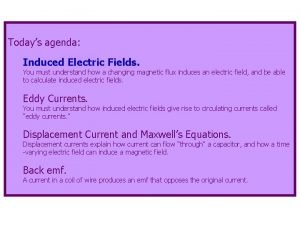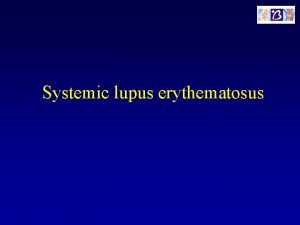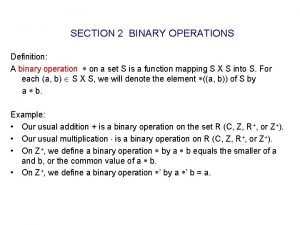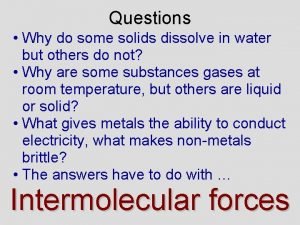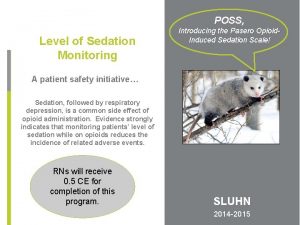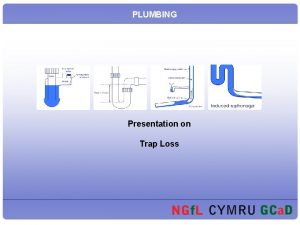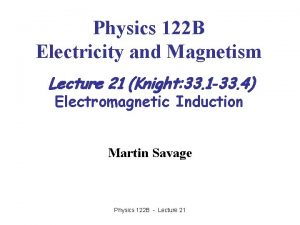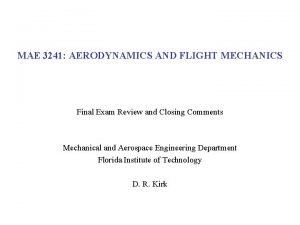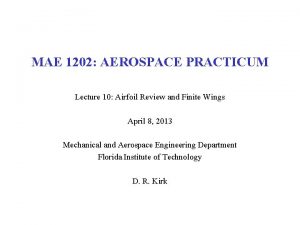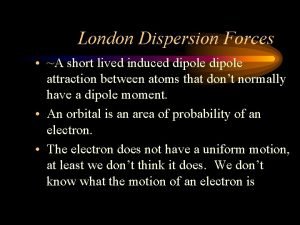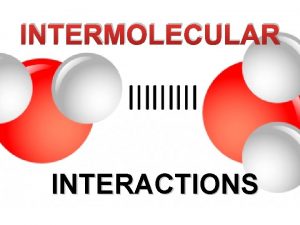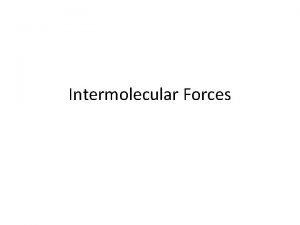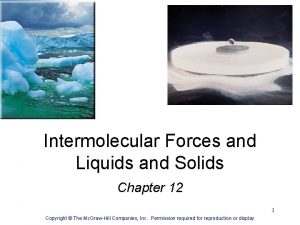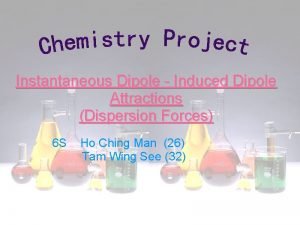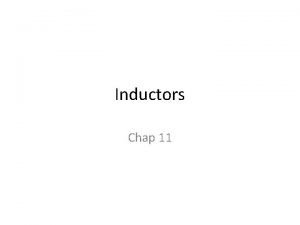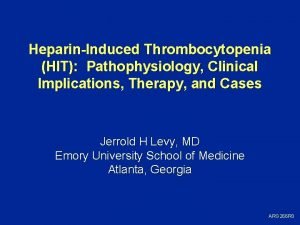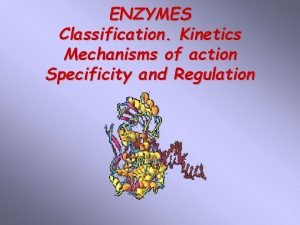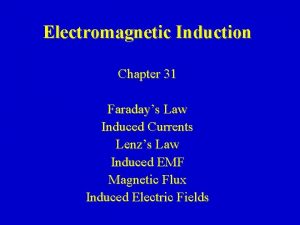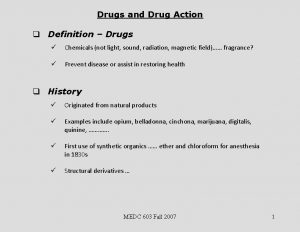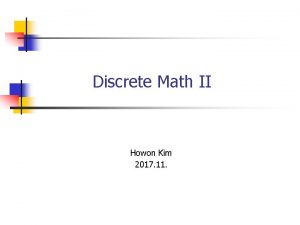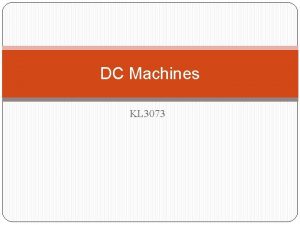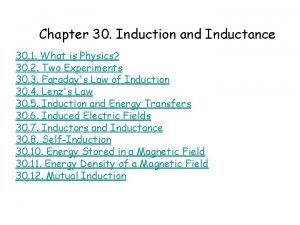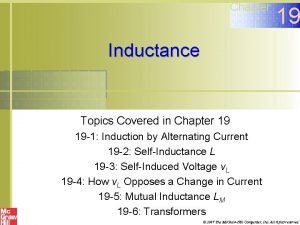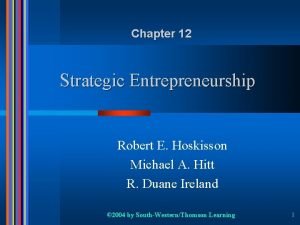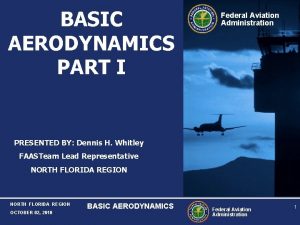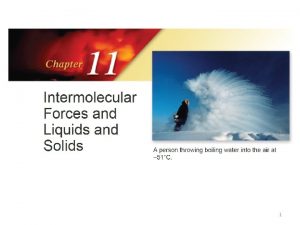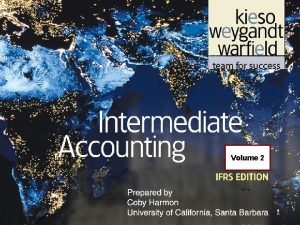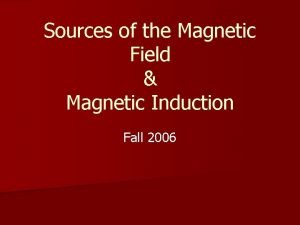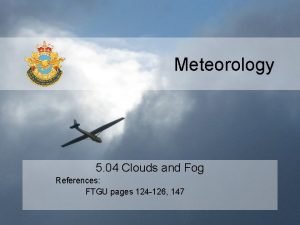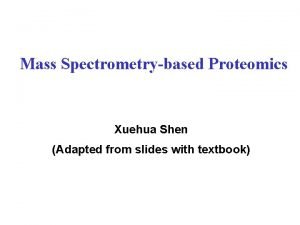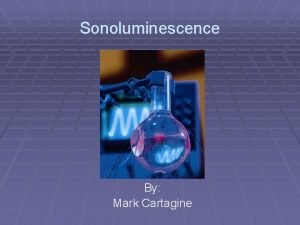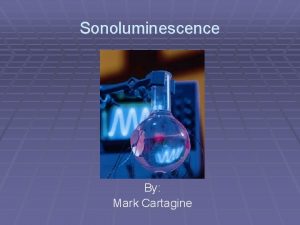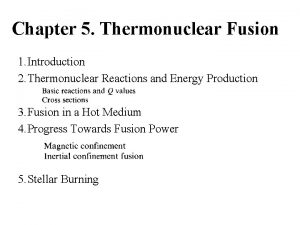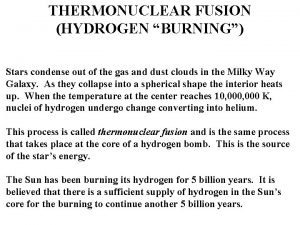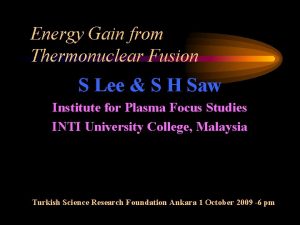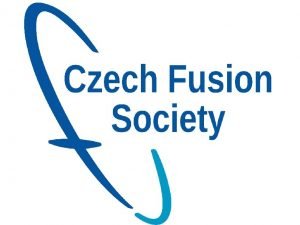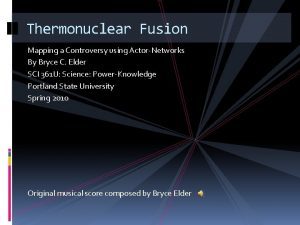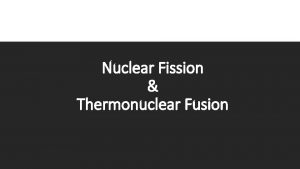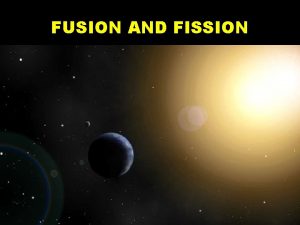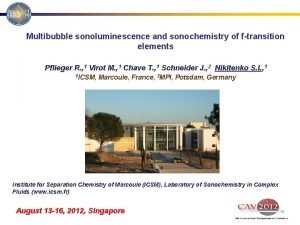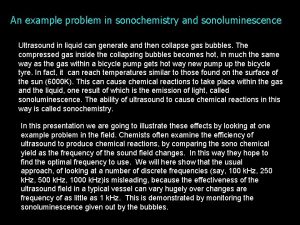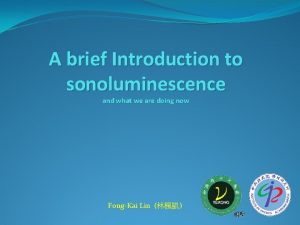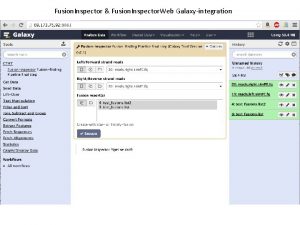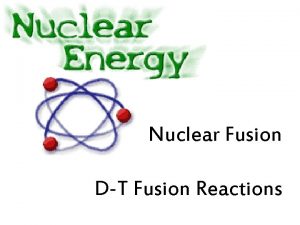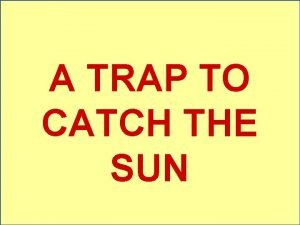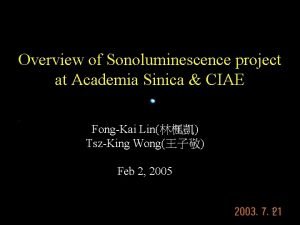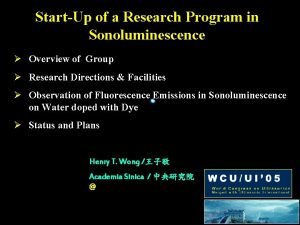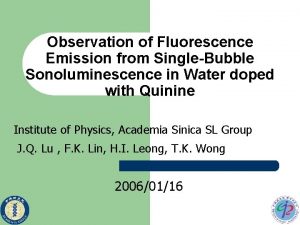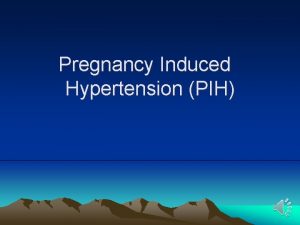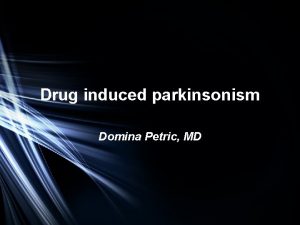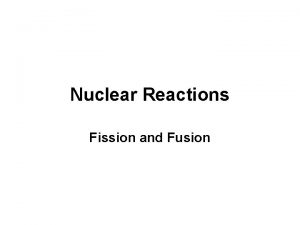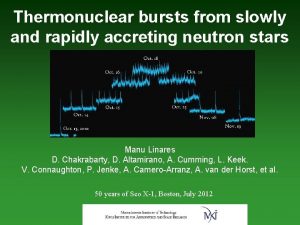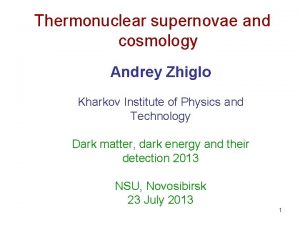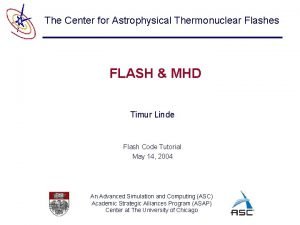SONOLUMINESCENCE AND INDUCED FUSION WORKSHOP DeuteriumDeuterium Thermonuclear Fusion







































- Slides: 39

SONOLUMINESCENCE AND INDUCED FUSION WORKSHOP Deuterium-Deuterium Thermonuclear Fusion due to Acoustical Cavitation (Theoretical Analysis) Robert I. NIGMATULIN Ufa-Bashkortostan Branch of Russian Academy of Sciences - President nigmar@anrb. ru Richard T. Lahey, Jr Rensslear Polytechnic Institute Troy, NY, 12180 laheyr@rpi. edu 19 June, 2003 Arlington, VA

THE TEAM RUSSIA • Ufa • Robert I. NIGMATULIN • Iskander Sh. AKHATOV • Naila K. VAKHITOVA • Raisa Kh. BOLOTNOVA • Andrew S. TOPOLNIKOV • Marat A. ILGAMOV • Kazan • Alexander A. AGANIN USA • RPI • Richard LAHEY, Jr. • Robert BLOCK • Francisco MORAGA • ORNL • Rusi TALEYARKHAN • Colin D. WEST • Jeing S. CHO

SPHERICAL SHOCK WAVE CONVERGENCE AND CUMULATION Initiation of a Spherical Shock Wave by the Convergent Interface Selfsimilar Cumulation of the Spherical or Cylindrical Shock Wave from the Infinity • • • Guderley, 1942; Landau & Stanyukovich, 1955; Nigmatulin, 1967 Focusing of the Spherical Shock Wave at the Center of the Bubble The Spherical Shock Wave after the Reflection from the Center of the Bubble

Specific Features of Single Bubble Sonoluminescence Radius of the bubble a • Equilibrium bubble size a 0 ~ 3 – 5 m • Adiabatic bulk compression gas temperature Tmax ~ 5000 K (? !) tw • Cold water effect • Noble gas effect • Extremely short light flashes dt. F ~ 50 ps = 5· 10 -11 s a 0 amin tw dt. C ~ 10 -8 s t Light Radiation Tmax ~ 5000 K (adiabatic compression) dt. F ~ 10 -11 s tw ~ 30 s dt. C ~ 30 ns dt. F ~ 50 ps t 6 days 7 min 0, 7 s

Supercompression by Convergent Spherical Shock Wave Moss et al (Livermore National Laboratory, 1994) Radius of the Hot Plasma Core: 10 9 m = 1 nm Density: 10 g/cm 3 = 104 kg/m 3 Temperature: 106 K Time Duration: 10 11 s = 10 ps No Thermonuclear Fusion

HOW TO AMPLIFY THE SUPERCOMPRESSION? • AMPLIFING THE ACOUSTIC WAVE ( p. I 15 -20 bar) • GAS IN THE BUBBLE: CONDENSING VAPOR (VAPOR CAVITATION) - Minimizing Effect of Gas Cushioning - Higher Kinetic Energy of Convergent Liquid • COLD LIQUID • LARGE MOLECULES (ORGANIC) LIQUID – Low Sound Speed in Vapor • CLUSTER of the Bubbles

Kinetic Energy of Convergent Flow around the Bubble (CFAB) p 15 bar (in SBSL p 1. 5 bar) Rmax 500 – 800 mcm (in SBSL Rmax 50 – 80 mcm) In our experiments: • the Kinetic Energy K of CFAB is 104 times higher • the maximum mass of the gas 103 times higher BUT the final mass of the gas in the Bubble m is only 50 -100 times higher (because of the condensation) • K/m and Tmax is = 100 – 200 times higher than in SBSL It means that in our experiment we may get Tmax (100 -200) 106 K

Mass, Momentum, Energy Conservation Differential Equations Liquid • Mass a(t) Gas • Momentum • Energy

INTERFACIAL BOUNDARY CONDITIONS Mass: (r = a(t)) - intensity of phase transition Momentum: Energy: Kinetics of phase transition (Hertz. Knudsen-Langmuir Eqn): - (Labuntsov, 1968) p. S(T) – saturation pressure, l – evaporation heat a - accommodation (condensation) coefficient

MI-GRUNEIZEN EQUATIONS OF STATE • p and pp – “cold” or potential internal energy and pressure due to intermolecular interaction • T and p. T – thermal internal energy and thermal pressure • c - chemical internal energy - averaged heat capacity and Gruneizen Coefficient

LENNARD-JONES POTENTIAL pp = R n – A m p = pp p BORN-MAYER POTENTIAL V 1 V 0 LIQUID PHASE (NONDISSOCIATED )

SHOCK ADIABAT (D-u) FOR LIQUID ACETONE Shock Wave Speed, D, km/s (Trunin, 1992) Non-dissociated Dissociated Trunin, 1992 Cl MASS VELOCITY, U, km/s D – Shock Wave Speed U – Mass Velocity after the Shock Wave MASS VELOCITY, U, km/s U D

SHOCK ADIABAT & ISOTHERMS (P-V) for D-Acetone (C 3 D 6 O) Isotherms of Vapor Shock adiabat of Liquid 6000 K ● Trunin, 1992 5000 K Dis 4000 K PRESSURE p, bar PRESSURE p, Mbar NDis 3000 K Dis 2000 K 1000 K NDis RELATIVE VOLUME, 0/ 0 D = (D – U) p – p 0 = 0 D U RELATIVE VOLUME, 0/

ISOTHERMS (P-V) & SATURATION LINE for D-Acetone Internal Energy and Evaporation heat Isotherms C PRESSURE p, bar ENERGY , 105 m 2/s 2 C Vapor Liquid Evaporation Heat (ig-il) RELATIVE VOLUME, 0/ TEMPERATURE, K

DISSOCIATION of GAS 0. 9 0. 1 Td

IONIZATION of DISSOCIATED GAS

IONIZATION CONSTANTS

THERMAL CONDUCTIVITY for acetone 0. 08 Gas 3 lg , kg m/(s K) lg/lg 0 , kg m/(s 3 K) 0. 06 0. 04 0. 02 0. 00 200 400 600 T, K 800 10 6 10 5 10 4 10 3 10 2 10 1 10 0 Gas 3 10 Liquid 5 7 10 10 T, K 9 10

KINETICS OF FUSION

Different Stages for Bubble Expansion and Compression • Low Mach Regime (M << 1) Rayleigh-Plesset + Thermal Conductivity Eqn • Middle & High Mach Regime (M ~ 1, and M >> 1) Hydro Code a, m 500 BF Tg=Tg(t, r) pg=pg(t) Heat conducting, homobaric gas (M < 10 -1) M>1 SBSL Tg=Tg(t, r) pg=pg(t, r) t, s 30

Low Mach regime For GAS (vapor): For LIQUID: Rayleigh-Plesset equation

THERMAL CONDUCTIVITY EQUATIONS FOR HOMOBARIC BUBBLE (pg = pg(t)) IN INCOMPRESSIBLE LIQUID ( l = const)

Cluster Amplification Effect a, m a 20 = 0. 05 Void fraction Number of bubbles N = 50 Maximum microbubble radius a 0 = a max = 400 m R Radius of the cluster R 0 = 4 mm r=0 r = 2 mm r = 4 mm r = 2 mm t, m s p, bar r=0 t = 32 s r, mm t, s

LOW MACH (microsecond) STAGE

LOW MACH (microsecond) STAGE

Transition from LOW MACH to HIGH MACH STAGE (microsecond stage)

40 104 a, m , kg/m 3 30 20 10 t 16 - t 20 19 18 20 102 * 16 17 0 p , bar 4 0 -4 -8 -5. 0 * t 16 - t 20 0. 0 t - t* , n s 1012 1010 108 106 104 102 1 19 18 108 19 18 20 17 16 5. 0 HIGH MACH (nanosecond) STAGE T , K da/dt, km/s 8 20 106 * 104 102 -5. 0 17 16 0. 0 t - t*, n s 5. 0

HIGH MACH (nanosecond) STAGE

PARAMETERS IN THE CENTER OF THE CORE

LIQUID DISSOCIATION IMPACT 50 “Cold dissociation” because of the “super high pressure” (105 bar) in liquid needs 102 ns; “Super high pressure” in liquid (near the bubble interface) takes place 1 ns RADIUS [mkm] 40 30 20 dissociated liquid 10 non-dissociated liquid 0 -10 -5 TIME [ns] 0 5 Вubble radius evolution for deuterated acetone C 3 D 6 O;

“COLD” ELECTRONS Te << Ti (during 10 -13 s) CV = 2000 m 2/c 2 K, not 8000 m 2/c 2 K

Neutron production distribution and maximum density, temperature and velocity Nr 108 107 106 0. 16 0. 12 0. 08 max 105 0. 04 103 0. 00 10 -2 10 -1 100 101 102 103 r , nm 0 0. 16 -800 0. 08 umax r=1. 32 nm 0. 08 r=2. 65 nm r=5. 29 nm 0. 04 0. 00 r=13. 2 nm r=26. 5 nm 0 4. 0 1. 0 -1600 0. 00 10 -2 10 -1 100 101 102 103 r , nm 0. 0 Nr r* 40 60 80 100 r , nm r. F 2. 0 0. 04 -1200 20 3. 0 0. 12 N r , nm -1 Nr , nm-1 u max, km/s -400 r=0. 132 nm r=0. 256 nm N r , nm -1 max , kg/m 3 & Tmax , K 109 Tmax N 1010 10 -1 100 101 r, nm 102

INTERNAL GAS ENERGY AS THE SUM OF COMPONENTS

Acetone p. T/p =103 kg/m 3 =104 kg/m 3 TEMPERATURE, K

LOW TEMPERATURE (condensation) EFFECT Normalized neutron production, N/N 273 250 MINIMUM MASS, mg min, ng 20 0 15 0 a = 0. 1 10 0 50 a = 1. 0 0 25 0 260 270 28 0 2 90 LIQUID TEMPERATURE, Tl 0, K 300 3 a = 1. 0 2 1 a = 0. 1 0 250 260 270 280 290 LIQUID TEMPERATURE, Tl 0, K Minimum bubble mass and total number of emitted neutrons vs liquid temperature, T 0 300

Fig. 1. Temporal dependence of the air bubble radius R and some bubble shapes in the course of a single-period harmonic pressure oscillation in water with p = 3 bar, /2 = 26. 5 k. Hz, for a 20/R 0 = 2. 5· 10 -2, R 0 = 4. 5 m. While plotting the shapes, the bubble radius was taken to be R 0[1 + 0. 3{3. 5 lg(R/R 0) + 1. 5|lg(R/R 0)|}]. Incopmpressible viscous liquid, homobaric Van-der-Waals gas.

a 20/R 0 = 0. 03 Incompressible viscous Liquid Homobaric Van der Waals Gas a 20/R 0 = 0. 001 Temporal dependences of the radius R of an air bubble in water, the sphericity distortion a 2 /R and some bubble shapes just before the time of the collapse tc under harmonic forcing with p=5 bar, /2 =26, 5 k. Hz for two values of the initial distortion. Convergent and divergent shock waves in the bubble are shown in figure (b).

SUMMARY OF THE ANALYSIS Bubble Fusion (ORNL+RPI+RAS) Sonoluminescence (LLNL) Density: 20 - 80 g/cm 3 10 g/cm 3 Temperature: 108 K = 10 Ke. V 106 K = 10 -1 Ke. V Pressure: 1011 bar Velocity: 900 km/s Time Duration: 10 13– 10 12 s = 10 1 -100 ps 10 ps Radius of the Fusion Core: 50 nm 1 -3 nm Number of nucleus: 20 • 109 Fast Neutron & Tritium Production 10 -1 - 10 per collapse

FINDINGS • COLD LIQUID Effect • CLUSTER effect • NON-DISSOCIATION of Liquid • “COLD” Electrons” • SHARPENNING: Node size for Fusion Core r 0. 1 nm << a 10 000 nm
 Ion ion interaction
Ion ion interaction Lock and key and induced fit
Lock and key and induced fit Induced fit vs lock and key
Induced fit vs lock and key Right hand grip rule
Right hand grip rule Induced fit model vs lock and key
Induced fit model vs lock and key Ch2cl intermolecular forces
Ch2cl intermolecular forces Viral induced wheeze vs asthma
Viral induced wheeze vs asthma Induced electric field
Induced electric field Field
Field Drug induced sle
Drug induced sle Induced binary operation
Induced binary operation Induced dipole
Induced dipole Poss scale
Poss scale Self-siphonage
Self-siphonage Induced current formula
Induced current formula Induced drag formula
Induced drag formula Induced drag formula
Induced drag formula Induced dipole
Induced dipole Chem ufl
Chem ufl Intermolecular forces
Intermolecular forces Ion induced dipole examples
Ion induced dipole examples Instantaneous dipole
Instantaneous dipole How to calculate magnetic force
How to calculate magnetic force Pancreazin
Pancreazin Symptoms of heparin induced thrombocytopenia
Symptoms of heparin induced thrombocytopenia Induced fit hypothesis
Induced fit hypothesis Explain faraday's law of electromagnetic induction
Explain faraday's law of electromagnetic induction Induced fit hypothesis
Induced fit hypothesis Drug induced thrombocytopenia
Drug induced thrombocytopenia Induced subgraph
Induced subgraph Induced voltage formula
Induced voltage formula Emf
Emf Induced voltage formula
Induced voltage formula Induced strategic behavior
Induced strategic behavior Faa aerodynamics
Faa aerodynamics Dipole induced dipole forces examples
Dipole induced dipole forces examples Contoh sekuritas dilutif
Contoh sekuritas dilutif Induced magnetic field
Induced magnetic field 5 types of fog
5 types of fog Co-terminus
Co-terminus

